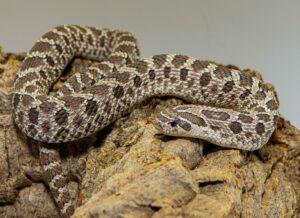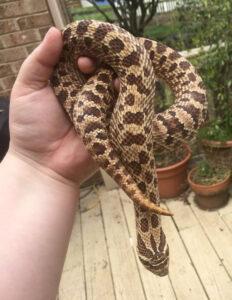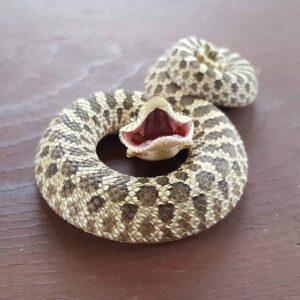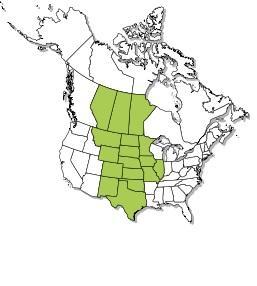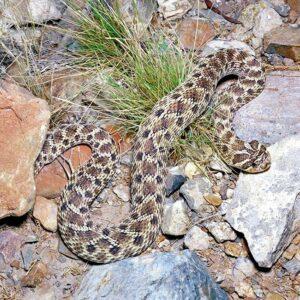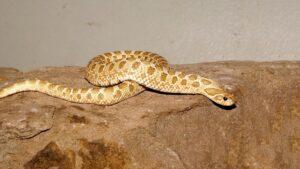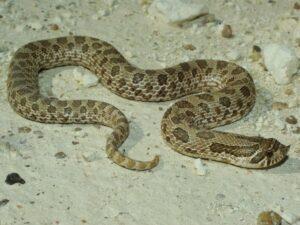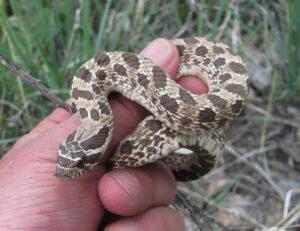The western hognose snake is a colubrid species native to the North American continent. They are also known as blow snake, bluffer, prairie hognose snake, Texas rooter, and Texas hognose snake.
The species is one of the most popular pet snakes, with a fun personality.
Scientific Classifications
- Suborder:Serpentes
- Family:Colubridae
- Genus:Heterodon
- Species:H. nasicus
Conservation Status
Subspecies and Morphs
There are three recognized subspecies –
- Heterodon nasicus nasicus
- Heterodon nasicus gloydi
- Heterodon nasicus kennerlyi
Since it is among the most popular snakes kept as pets, there are 52 different color morphs, with the most popular ones being:
- Albino
- Albino Anaconda
- Toffeeconda
- Axanthic
- Pink Pastel
- Jaguar
- Red Albino
- Extreme Albino Red Anaconda
- Super Arctic
- Coral Snow
- Lavender
Description
Size
It is a relatively smaller snake with a stout body, typically growing 1.5-2 feet in length. Males usually don’t grow longer than 2 feet, but the females can sometimes be up to 3 feet long.
Color and Appearance
The colors vary significantly between the three subspecies. The base color ranges from tan, gray, brown, or reddish-brown. Regardless of the base color, their backs are always covered in dark blotches, making them look like rattlesnakes. This resemblance is believed to be an adaptation where the non-venomous snakes mimic the much more dangerous snakes to ward off enemies (Batesian mimicry).
There are two rows of smaller oval dark marks on their sides. The bellies are darker than the rest of the body, with a solid black underside of their tail.
The lighter tones in their coloration help them camouflage in their desert habitat.
Being a ‘hognose’ snake, they have the characteristic rostral (nose) scale modification that makes them look like having an upturned nose. There are also small fangs located high up in their upper jaws (rear fangs).
Are they Dangerous to Humans
These snakes are very docile and would run away rather than attack in case of an encounter.
Until recently, this snake was considered non-venomous, though there has been considerable debate as to whether it should be counted as a venomous species. A 1985 article by Michael A. Morris describes the effects of a western hognose snake bite, where the author experienced tenderness and swelling for two days. It shows that the snakes have venom, though it is not deadly to humans.
It is unclear whether the above symptoms result from the mild venom produced by their venom glands or their saliva, which is harmful to toads – the snake’s natural food source. Whatever it may be, these snakes rarely bite, and even when they do, there are no serious effects or deaths.
Western Hognose Snake at a Glance
Predators
Birds of prey like hawks, larger snakes, and carnivores, including coyotes, raccoons, and foxes.
When faced with a predator, they flatten their head in an intimidating way and make loud hissing noises, much like cobras do. If this does not work, the snake will play dead by lying belly-up, sticking its tongue out.
Diet
Primarily toads and other small to medium amphibians, including tree frogs and small lizards. They may sometimes feed on small rodents, birds, smaller snakes, and eggs.
Their ‘hog nose’ formation helps to dig out toads.
Not true constrictors, these rear-fanged snakes bite to introduce their saliva into the body of their prey toad. The saliva breaks down and neutralizes the toads’ toxins, allowing the snakes to consume them safely.
They don’t eat anything during their brumation. Even in captivity, they are known to stop eating during winter because of their natural instincts to brumate.
Reproduction
Oviparous (Egg-laying)
Mating season starts in February-March, continuing through May. Following mating, the females lay their eggs around June-August, burying them in sand till they hatch. The elongated soft-shelled eggs take 50-60 days to hatch, with the hatchlings being 5-9 inches (13-23 cm) long. They reach sexual maturity after about 2 years.
Care Sheet
Size of the Enclosure: A 3ft x 2ft x 2ft tank with enough ventilation would be ideal for keeping one adult. Since it is a terrestrial species, the tank should have more floor space.
Temperature: The basking area temperature should be between 85°F and 90°F, while the rest of the tank should be between 75°F-85°F. The nighttime temperature should not drop below 60°F.
Substrate: Aspen shavings work well as these snakes like to dig and bury themselves. Avoid barks or mulches as these hold more moisture and can lead to unhealthy humidity levels.
Source
squarespace-cdn.com, elmwoodparkzoo.org, monaconatureencyclopedia.com, reddit.com, inaturalist.ca, sdherps.org, sunfishexotics.com, maps2.dnr.state.mn.us, nps.gov

